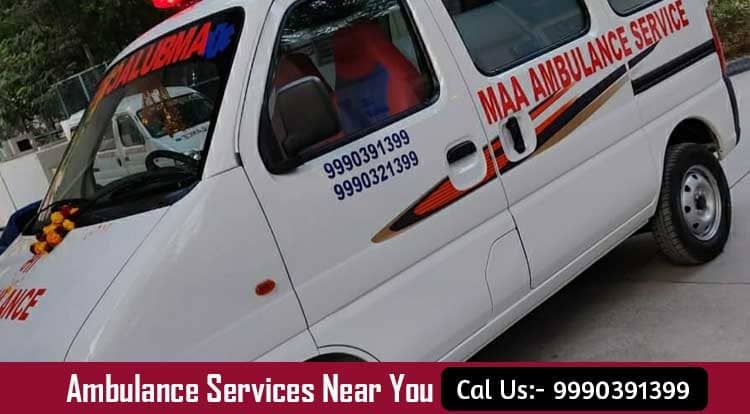Book Now ICU Ambulance Services in Delhi NCR By Maa Ambulance Services
Are you looking for a ICU ambulance services in Delhi , contact Maa Ambulance the leading ICU ambulance providers. There is no denial that an emergency can strike at any moment. So it is very important to have the immediate and right medical care.
Maa Ambulance office you the best ambulance service with the entire basic facilities at the most affordable price. We have a complete ICU backup and advance life support. All our ambulance is fully sanitized and medically well equipped. Our team helps you with 24 hours helpline support system. You can get in touch with us anytime you want.
High Quality ICU Ambulance Service in Delhi
We offer immediate and best emergency care through our well-equipped ambulance services across Delhi and Delhi NCR. These are typically designed to respond to emergency calls for people who are critically ill children women senior citizen and accident victims. It is so painful to see people suffering in pain due to lack of ambulance service or no availability. But we here make sure to reach you reach you within 15 minutes. Get in touch with us and we will be happy to serve you!
An ICU (Intensive Care Unit) ambulance, also known as a Critical Care Ambulance, is a specialized ambulance equipped to transport critically ill or injured patients who require intensive medical care and monitoring during transit. These ambulances are designed to provide a high level of medical support and are staffed by highly trained medical professionals, often including critical care nurses and paramedics with specialized training.
Key features of an ICU ambulance include:
Advanced Medical Equipment: ICU ambulances are equipped with a wide range of advanced medical equipment, including ventilators, cardiac monitors, defibrillators, infusion pumps, and specialized medication to provide immediate care and life support to patients.
Intensive Monitoring: Patients in ICU ambulances are continuously monitored to assess vital signs such as heart rate, blood pressure, oxygen levels, and ECG readings. This real-time monitoring allows medical staff to respond promptly to any changes in the patient's condition.
Ventilation Support: These ambulances have ventilators to assist patients with breathing difficulties. This is crucial for patients with severe respiratory conditions or those recovering from surgery.
Intravenous (IV) Therapy: ICU ambulances are equipped to administer intravenous medications and fluids to patients. This ensures that critically ill patients receive necessary treatments and medications during transit.
Specialized Staff: ICU ambulances are staffed with highly trained medical professionals who have experience in critical care. This includes critical care nurses, respiratory therapists, and paramedics with advanced training in critical care procedures.
Isolation Capabilities: Some ICU ambulances have isolation units to transport patients with highly contagious diseases, such as infectious outbreaks or severe cases like COVID-19. These units are equipped with negative pressure systems to prevent the spread of airborne pathogens.
Patient Comfort: Efforts are made to ensure the patient's comfort and safety during transport. This may include features like temperature control, comfortable patient beds, and additional space for medical personnel to provide care en route.
ICU ambulances are typically used for transporting patients who are in critical condition, such as those recovering from major surgeries, severe trauma, cardiac events, or those with life-threatening illnesses. The presence of advanced medical equipment and highly trained personnel allows for continuous medical intervention, making these ambulances essential for ensuring that patients receive the highest level of care while being transported to or between medical facilities.
Difference between Normal Ambulance and ICU Ambulance
The primary difference between a regular ambulance and an ICU (Intensive Care Unit) ambulance lies in the level of medical care and equipment they provide during patient transport. Here are the key distinctions between the two:
Equipment and Medical Capability:
Regular Ambulance: Regular ambulances, often referred to as Basic Life Support (BLS) ambulances, are equipped with basic medical equipment, such as stretchers, oxygen, bandages, and automated external defibrillators (AEDs). They are staffed by Emergency Medical Technicians (EMTs) or paramedics trained in basic life support procedures.
ICU Ambulance: ICU ambulances, also known as Critical Care Ambulances or Advanced Life Support (ALS) ambulances, are equipped with advanced medical equipment, including ventilators, cardiac monitors, defibrillators, infusion pumps, and a wider range of medications. They are staffed by highly trained medical professionals, often including critical care nurses and paramedics with specialized training in caring for critically ill patients.
Medical Personnel:
Regular Ambulance: Regular ambulances are typically staffed by EMTs or paramedics with basic training in emergency medical care. They can provide essential care, such as CPR, wound management, and basic life support.
ICU Ambulance: ICU ambulances are staffed with medical professionals who have advanced training in critical care. This includes critical care nurses, respiratory therapists, and paramedics with expertise in administering complex treatments, advanced airway management, and continuous monitoring.
Patient Population:
Regular Ambulance: Regular ambulances are used for transporting patients who require medical attention but do not have critical care needs. They are suitable for stable patients or those with non-life-threatening conditions.
ICU Ambulance: ICU ambulances are designed for transporting critically ill or severely injured patients who require intensive care and continuous monitoring during transport. These patients often have complex medical conditions or are in critical condition.
Equipment for Continuous Monitoring:
Regular Ambulance: Regular ambulances may have basic monitoring capabilities, such as pulse oximetry and blood pressure monitoring. However, they lack the advanced monitoring equipment found in ICU ambulances.
ICU Ambulance: ICU ambulances are equipped with advanced monitoring devices that allow continuous tracking of vital signs, including heart rate, blood pressure, oxygen levels, and ECG readings. This real-time monitoring is crucial for responding to changes in the patient's condition.
Scope of Care:
Regular Ambulance: Regular ambulances provide basic medical care and transportation. They are suitable for non-critical medical emergencies and routine patient transfers.
ICU Ambulance: ICU ambulances provide a higher level of medical care, including advanced life support, ventilator support, and administration of critical medications. They are essential for patients who are in critical condition and require intensive care during transport.
In summary, the key difference between a regular ambulance and an ICU ambulance is the level of medical care and equipment they offer. Regular ambulances are suitable for less severe medical emergencies, while ICU ambulances are specialized for transporting critically ill patients who require intensive care and monitoring during transit.





